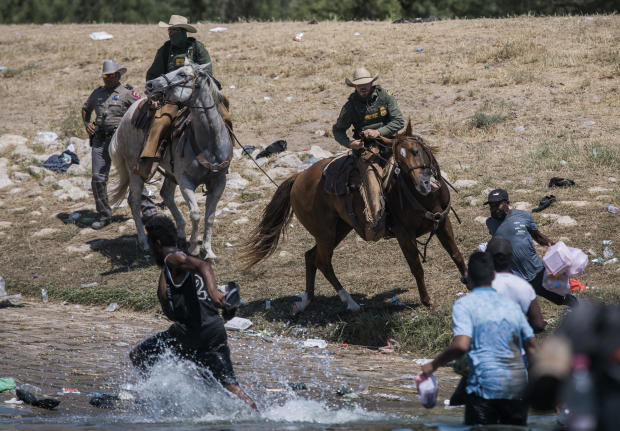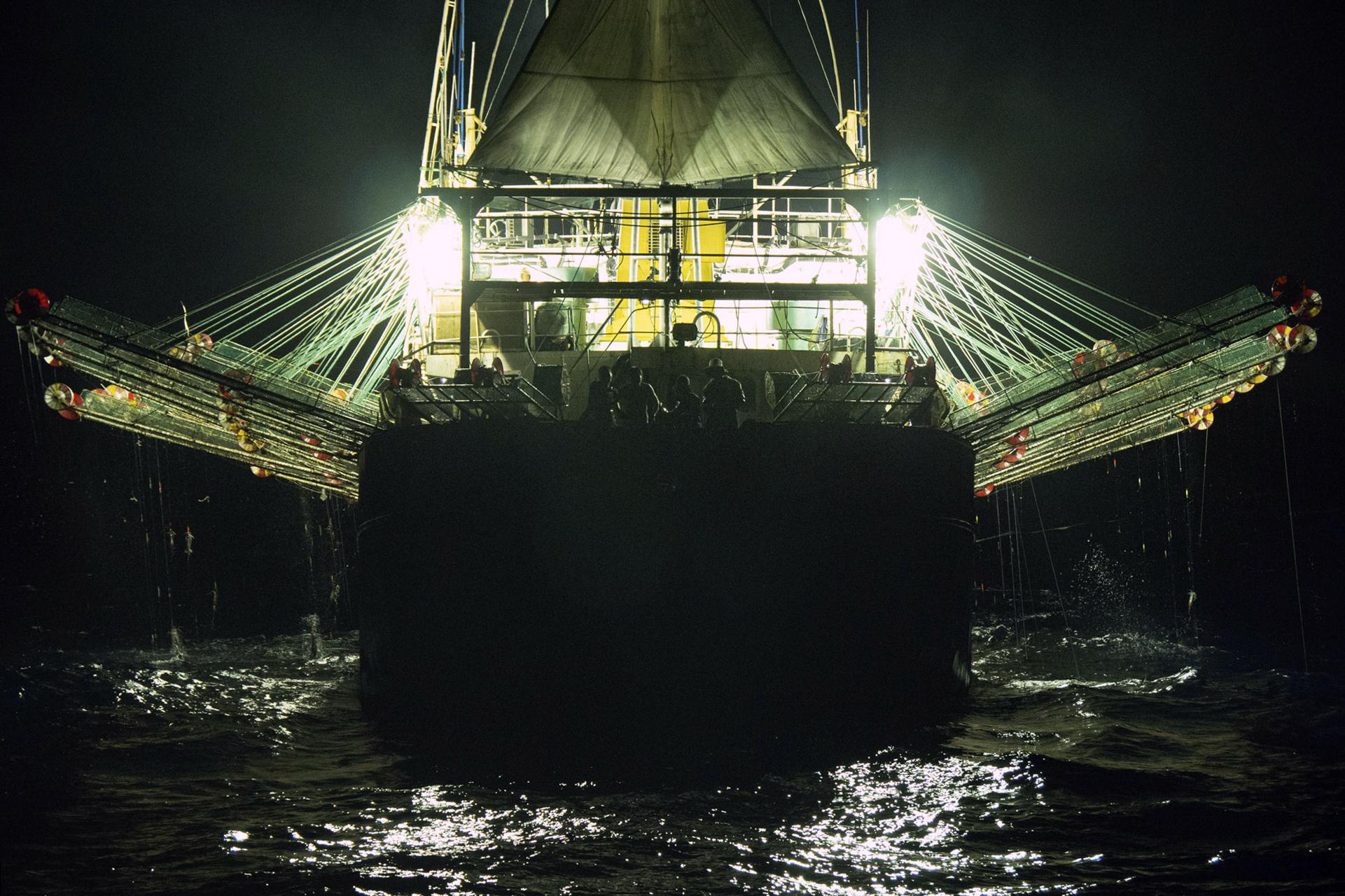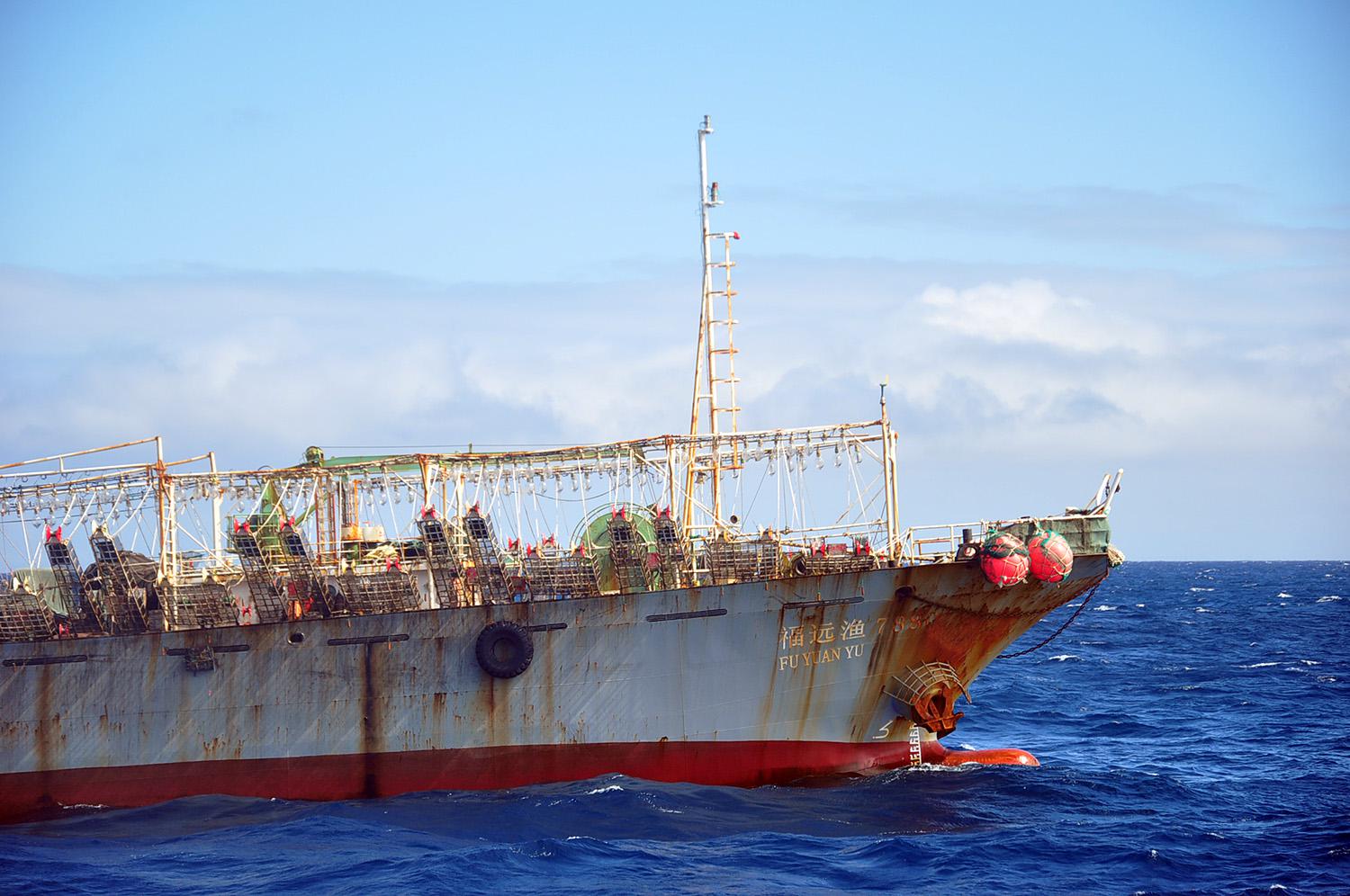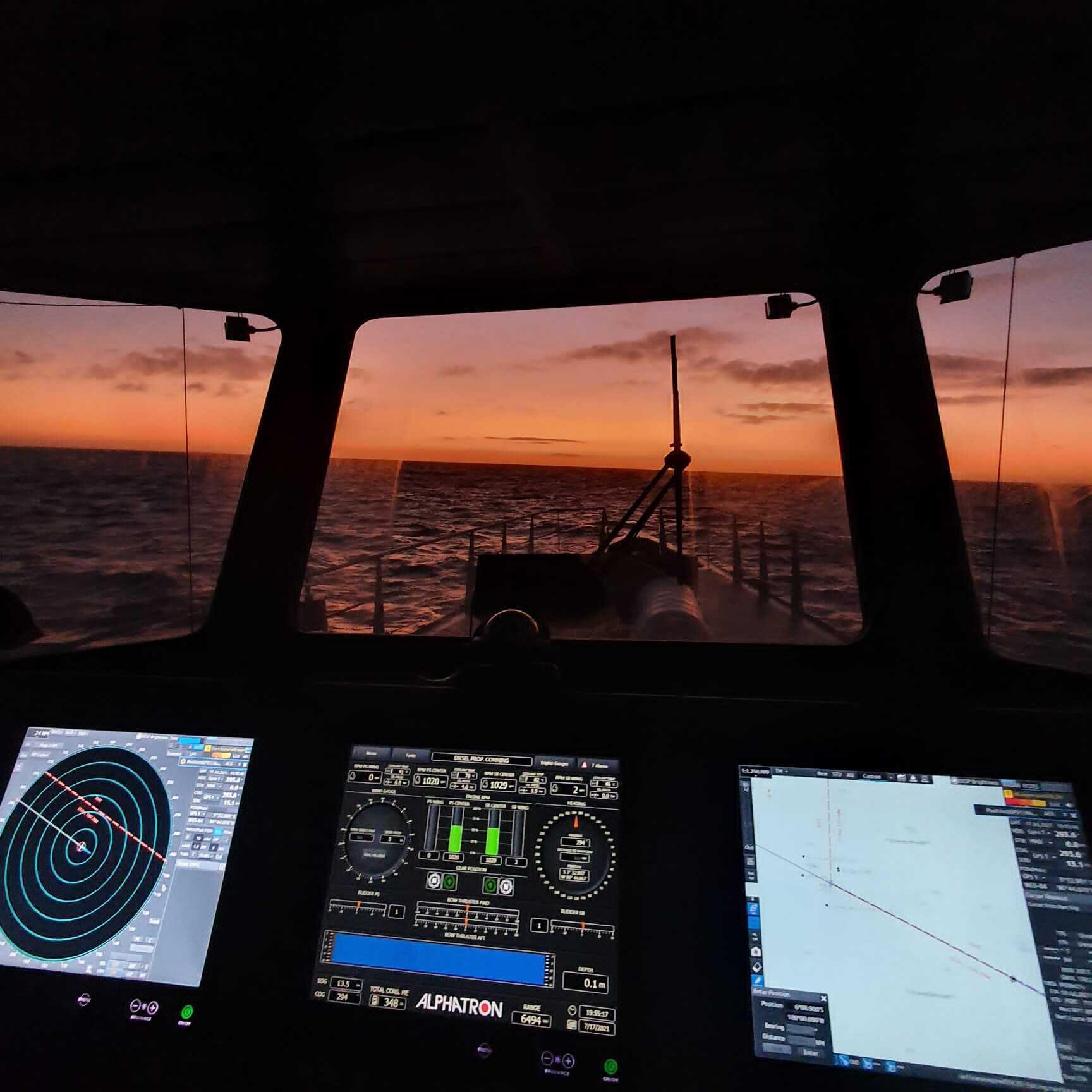By AARON MORRISON and ASTRID GALVAN

1 of 11
The images — men on horseback, appearing to use reins as whips to corral Haitian asylum seekers trying to cross into the U.S. from Mexico — provoked an outcry. But to many Haitians and Black Americans, they’re merely confirmation of a deeply held belief:
U.S. immigration policies, they say, are and have long been anti-Black.
The Border Patrol’s treatment of Haitian migrants, they say, is just the latest in a long history of discriminatory U.S. policies and of indignities faced by Black people, sparking new anger among Haitian Americans, Black immigrant advocates and civil rights leaders.
They point to immigration data that indicate Haitians and other Black migrants routinely face structural barriers to legally entering or living in the U.S. — and often endure disproportionate contact with the American criminal legal system that can jeopardize their residency or hasten their deportation.
Haitians, in particular, are granted asylum at the lowest rate of any nationality with consistently high numbers of asylum seekers, according to an analysis of data by The Associated Press.
“Black immigrants live at the intersection of race and immigration and, for too long, have fallen through the cracks of red tape and legal loopholes,” said Yoliswa Cele of the UndocuBlack Network, a national advocacy organization for currently and formerly undocumented Black people.
US removes Haitian, Black, and Caribbean immigrants on criminal grounds at disproportionately high rates
While 43% of all immigrants were removed from the United States on criminal grounds in 2019, Haitian, Black and Caribbean immigrants were removed on criminal grounds approximately 62% of the time.
ORIGIN TOTAL REMOVALS CRIMINAL REMOVALS % OF REMOVALS ON CRIMINAL GROUNDS
While 43% of all immigrants were removed from the United States on criminal grounds in 2019, Haitian, Black and Caribbean immigrants were removed on criminal grounds approximately 62% of the time.
| ORIGIN | TOTAL REMOVALS | CRIMINAL REMOVALS | % OF REMOVALS ON CRIMINAL GROUNDS |
|---|---|---|---|
“Now through the videos capturing the abuses on Haitians at the border, the world has now seen for itself that all migrants seeking a better tomorrow aren’t treated equal when skin color is involved.”
Between 2018 and 2021, only 4.62% of Haitian asylum seekers were granted asylum by the U.S. — the lowest rate among 84 groups for whom data is available. Asylum seekers from the Dominican Republic, which shares the island of Hispaniola with Haiti, have a similarly low rate of 5.11%.
By comparison, four of the five top U.S. asylum applicants are from Latin American countries — El Salvador, Guatemala, Mexico and Honduras. Their acceptance rates range from 6.21% to 14.12%.
US rarely grants asylum to Haitian migrants
Less than five percent of Haitian asylum seekers had their requests granted by the United States from October 2018 through June 2021 – the lowest rate amongst 83 nationalities where asylum decision data is available.
| NATIONALITY | GRANTED APPLICATIONS | TOTAL APPLICATIONS | GRANT RATE | |
|---|---|---|---|---|
MORE ON BORDER CRISIS
– Migrant camp shrinks on US border as more Haitians removed
Nicole Phillips, legal director for the Haitian Bridge Alliance, said racism has long driven the American government’s treatment of Haitian immigrants.
Phillips, whose organization is on the ground helping Haitians in Texas, says this dates back to the early 1800s, when Haitian slaves revolted and gained independence from France, and has continued through decades of U.S. intervention and occupation in the small island nation.
She said the U.S., threatened by the possibility of its own slaves revolting, both assisted the French and didn’t recognize Haitian independence for nearly six decades. The U.S. also loaned money to Haiti so that it could, in essence, buy its independence, collecting interest payments while plunging the country into poverty for decades.
“This mentality and stigma against Haitians stems all the way back to that period,” Phillips said.
The U.S. violently occupied Haiti from 1915 to 1934 and backed former Haiti dictator Francois Duvalier, whose oppressive regime resulted in 30,000 deaths and drove thousands to flee.
While the U.S. long treated Cubans with compassion — largely because of opposition to the Communist regime — the administrations of George H.W. Bush and Bill Clinton took a hard line on Haitians. And the Trump administration ended Temporary Protected Status for several nationalities, including Haitians and Central Americans.
Over and over, the U.S. has passed immigration legislation that excluded Black immigrants and Haitians, and promoted policies that unfairly jeopardized their legal status in the country, advocates said.
When they manage to enter the U.S., Black immigrants say they contend with systemic racism in the American criminal legal system and brutality of U.S. policing that has been endemic for people from across the African diaspora.
The Black Alliance for Just Immigration, a national racial justice and immigrant rights group, largely defines Black immigrants as people from nations in Africa and the Caribbean. By that definition, AP’s analysis of 2019 Department of Homeland Security data found 66% Black immigrants deported from the U.S were removed based on criminal grounds, as opposed to 43% of all immigrants.
Nana Gyamfi, BAJI’s executive director, said crimes of moral turpitude, including petty theft or turnstile jumping, have been used as partial justification for denying Black immigrants legal status. “We have people getting deported because of train fare,” she said.
Leaders within the Movement for Black Lives, a national coalition of Black-led racial justice and civil rights organizations, have pointed to the treatment of Haitians at the border as justification for their broader demands for defunding law enforcement agencies in the U.S.
Last year, following the murder of George Floyd, the coalition proposed sweeping federal legislation known as the BREATHE Act, which includes calls to end immigration detention, stop deportations due to contact with the criminal legal system, and ensure due process within the immigration court system.
“A lot of times in the immigration debate, Black people are erased and Black immigrants are erased from the conversation,” said Amara Enyia, a policy researcher for the Movement for Black Lives.
Ahead of a Thursday tour of the migrant encampment in Texas, civil rights leaders called for an investigation into the treatment of Black migrants at the border and for an immediate end to the deportation of Black asylum seekers.
The camp is “a catastrophic and human disgrace,” the Rev. Al Sharpton said after an hourlong tour with several Black American leaders in Del Rio. “We will keep coming back, as long as is necessary.”
At the border and in Port-au-Prince, Haiti, where hundreds had already been sent on flights from the U.S., Haitians said there was no doubt that race played a major part in their mistreatment.
“They are grabbing people, they bother us, especially Haitians because they identify us by skin,” said Jean Claudio Charles who, with his wife and year-old son, had been staying in an encampment on the Mexico side near Texas out of fear of arrest and deportation to Haiti.

Claude Magnolie, a Haitian citizen removed from the U.S. this week, said he didn’t see Border Patrol agents treating migrants of other nationalities the way he and others were treated: “This is discrimination, that is how I call it, they are treating us very badly.”
And in Miami, immigrant rights advocate Francesca Menes couldn’t believe her eyes as she watched images of the asylum seekers being corralled by men on horseback.
“My family is under that bridge,” Menes said, referring to a cousin, his wife and their newborn who recently met up in a small border town in Texas. It took Menes’s cousin two months to make the trek from Chile, where he had been living with his brothers for three years to escape Haiti’s political tumult, violence and devastation.
“It made me sick,” Menes said. “This didn’t happen with unaccompanied minors. You didn’t see people riding on horseback, basically herding people like they were cattle, like they were animals.”
Menes’ outrage has only grown, as have her fears for her family. When she overheard her mother on the phone with family members this week, Menes said she wanted nothing more than to tell them to return to Chile.
“We’ve actually tried to discourage our families,” she said. “People are looking for a better life. And we try to kind of ground our families: Do you know what it means to be Black in America?”
____
AP staffers Maria Verza in Ciudad Acuña, Mexico, Fernando Gonzalez in Port-au-Prince, Haiti, Jasen Lo in Chicago and Elliot Spagat from San Diego contributed. Morrison reported from New York City. Galvan reported from Phoenix. Both are members of the AP’s Race and Ethnicity team. Follow Galvan on Twitter: https://twitter.com/astridgalvan.
Issued on: 23/09/2021 -

Port-au-Prince (AFP)
Andre was hoping to "have a better life" in the United States than he could in Haiti. So he fled to Brazil, then traveled across South America to the US-Mexican border, just a few hours' flight from where his journey began.
But the 32-year-old, caught up in an explosive migrant crisis, ended up where he started -- deported home like hundreds of his compatriots in recent days, with no money or belongings.
"I had no future in my country, my salary was not enough to survive on," Andre, who asked that his last name not be used to protect his privacy, told AFP.
Andre recounted how his American dream became a nightmare -- after leaving Brazil, he ended up on a harrowing trip through the jungle on the Colombia-Panama border, where he was robbed and two young girls in his travel group were raped.
And then, he experienced the disappointment of getting so close, only to be sent home.
"As long as we are alive, we can start over, but this really hurts," he said outside the airport in the Haitian capital Port-au-Prince.
- First stop: Brazil -
The eldest of four siblings, Andre studied law after finishing high school -- a top choice among Haitian families. But the science classes he taught to finance his education didn't make him happy.

Against the advice of his loved ones, he bought a one-way ticket to Brazil in 2017.
He hardly knew anything about the country, but he didn't need a visa to go there, and so he went. In fact, Brazil has become a gateway for thousands of Haitians of his generation to escape their impoverished, crisis-wracked homeland.
First he ended up in Sao Paulo and then Porto Alegre -- in both cities, he got work on poultry farms.
"It did not scare me to do that kind of work, because I can honestly say it was a life of luxury compared to what I had in Haiti," he recalled with a smile.
Luxury for Andre meant working bus systems, health insurance, an elevator in his building and a full refrigerator that never broke down.
"In Haiti, the power sometimes goes off for four days or more," Andre said.
But the creature comforts he found in Brazil were ultimately not enough.
"Haitians only want to live in two countries in the Americas: the United States and Canada," he said.
Beyond a chance at his own American dream, Andre wanted to be able to help his family back home.
"With inflation (in Brazil), I didn't have enough to buy dollars to send back to Haiti," he explained.
Andre had a five-year residency permit in Brazil, but decided it was not enough reason to stay.

"If I could make it to the United States, it would only take me two hours to go see my family, and I could find flights for about $300. From Brazil, a ticket costs $1,000 and direct flights are rare," he said.
So this past summer, he started his trek north.
- Horror in the jungle -
After several domestic flights in Brazil, and then hours on buses across Bolivia and Peru, Andre arrived in Colombia. Before him was the Darien Gap, a mountainous jungle leading to Panama.

Many migrants have died trying to cross the area linking South and Central America. Conditions are difficult.
"Sometimes we drank river water and then, after we'd swallowed, we would see a corpse floating," Andre said, lamenting that some who attempted the journey did not survive.
Beyond the treacherous trip across rivers and tough terrain, and days of walking in unbearable heat, criminal gangs are everywhere.
Andre said he came across three groups of thieves. The first two took all of his cash. The last group wanted his mobile phone, the only thing of value he had left.
He finally convinced them to take some basic painkiller pills he had instead.
Retelling the story, the man turned stony-faced.
"After that, they raped two children. Their parents had no money, and so the robbers took the little girls and raped them not far from where we were," he said.
The girls were 11 and 12 years old, the youngest people in the group Andre was with as they crossed the Darien Gap.
"Their father and mother were there, standing by. We heard their screams but no one could do anything or we would all have been shot," he recalled.
- 'I can't stay' -
Once he got out of the jungle, Andre quickly arrived in Mexico, mainly taking buses through Costa Rica, Nicaragua, Honduras and Guatemala.

Two months and nearly $6,000 later, he ended up under the Del Rio bridge in Texas, in limbo as his attempt to enter the United States from Mexico after crossing the Rio Grande failed.
The United States, once his dream country, put Andre on a plane home to Haiti, four years after he first left for Brazil.
As the dust kicked up from the massive traffic in Port-au-Prince, Andre expressed his bitterness and frustration.
"Will I stay in Haiti? Given the political instability, the health situation, education... it's upsetting. I can't stay in a country like this," he said, already musing about how he could try to enter the United States the next time.
© 2021 AFP
BY CAMILO MONTOYA-GALVEZ
SEPTEMBER 23, 2021
The Biden administration has demobilized units of Border Patrol agents on horseback in Del Rio, Texas, following controversy over the tactics they employed recently to disperse Haitian migrants, the Department of Homeland Security (DHS) announced Thursday
"We have ceased the use of the horse patrol in Del Rio temporarily," a DHS official said during a briefing with reporters. "We'll prioritize other methods for identifying individuals who might be in medical distress."
The suspension comes days after news outlets captured video and photos showing mounted Border Patrol agents aggressively dispersing migrants near Del Rio. Some footage showed Border Patrol agents swinging lariats, a type of rope used by horse riders, while trying to impede the passage of Haitian migrants.
In one video, an agent on horseback was heard telling a migrant man who huddled with a group of women and children, "This is why your country's s--t, because you use your women for this."
The compilation of videos and photos sparked outrage among advocates for immigrants, Democratic lawmakers and top officials in the Biden administration, including Vice President Kamala Harris and DHS Secretary Alejandro Mayorkas, both of whom called the footage horrifying.
"What I saw depicted about those individuals on horseback treating human beings the way they were was horrible," Harris said Tuesday. "Human beings should never be treated that way."

Earlier this week, DHS pledged to "swiftly" investigate the incidents and take disciplinary actions if warranted, saying the department does not tolerate the abuse of migrants in its custody. The case was also referred to the Office of Inspector General at DHS.
Mayorkas told lawmakers on Wednesday the internal investigation should conclude by the end of next week and that he plans to make its findings public.
In the meantime, the Border Patrol agents at the center of the investigation have been placed on administrative duty and banned from interacting with migrants, Mayorkas said.
The uproar over the conduct of some Border Patrol agents is the latest flashpoint in the Biden administration's struggle to address a rapid and massive increase in Haitians arriving in Del Rio, a border sector that does not have the infrastructure to process and house large groups of migrants.
The spike in border arrivals, coupled with the emergence of a squalid camp underneath a bridge in Del Rio that was housing as many as 15,000 migrants at one point last weekend, prompted the administration to dramatically increase deportations to Haiti.
Since Sunday, the U.S. has expelled more than 1,400 Haitians to their homeland under Title 42, a public health authority that authorizes the quick removal of migrants and denies them a chance to seek asylum.
Those deportations have also garnered criticism from progressive lawmakers and advocates for asylum-seekers, who believe the U.S. should not be sending people to a country still reeling from a deadly earthquake, political turmoil worsened by the killing of its president in July, rampant insecurity and deep-rooted poverty.
Republicans, meanwhile, have criticized the administration for allowing some Haitian migrants to stay in the U.S. while they continue their immigration court cases.
US special envoy to Haiti resigns, slams migrant deportations
Issued on:
The US special envoy to Haiti resigned Thursday two months after his appointment, denouncing the Biden administration's deportation of Haitian migrants from the US-Mexico border back to their poverty-stricken homeland. "I will not be associated with the United States inhumane, counterproductive decision to deport thousands of Haitian refugees and illegal immigrants to Haiti," State Department envoy Daniel Foote said in a scathing letter of resignation.
Issued on: 23/09/2021 -
Video by: Douglas HERBERTF
Mexican President Andres Manuel Lopez Obrador urged the United States on Wednesday to act quickly to tackle the causes of the migrant crisis affecting the two neighboring countries. "Enough talking, it's time to act," Lopez Obrador told reporters as thousands of Haitian and other migrants massed on Mexico's northern border seeking access into the United States. FRANCE 24's International Affairs Commentator Douglas Herbert gives his analysis.
Issued on: 23/09/2021 -
Video by:FRANCE 24
At the UN General Assembly on Wednesday evening, Dominican Republic President Luis Abidaner, which shares the island of Hispaniola with Haiti, issued an urgent call for diplomats to mount a response to address the neighboring nation's crisis.















